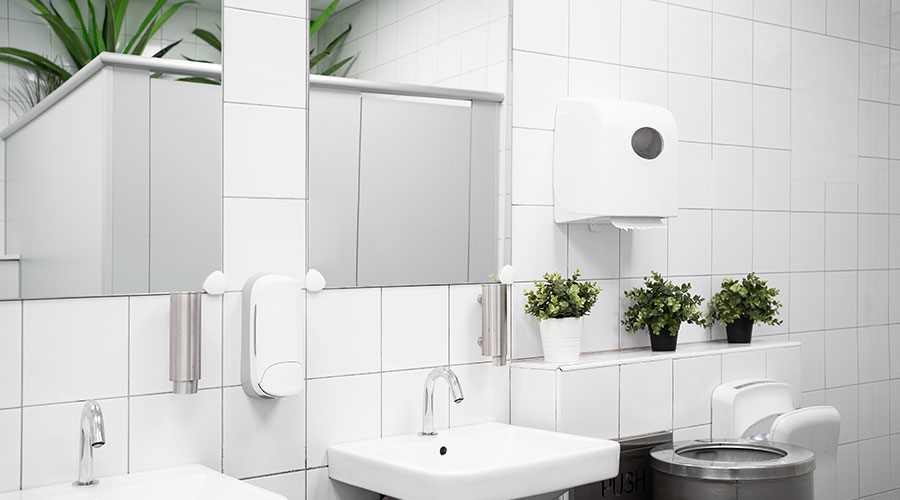Water conservation and plumbing
plumbing, green February 25, 2009
I’m Dan Hounsell, editor of Maintenance Solutions magazine. Today’s topic is, plumbing systems and water conservation.
Many maintenance and engineering managers face the difficult balancing act of reducing water use and meeting occupant needs and preferences for consumption. Managers might be motivated to reduce their facilities’ water use for several reasons, such as minimizing water and sewage costs, a sense of environmental responsibility, and pursuing an accredited certification, such as Leadership in Energy and Environmental Design.
How can managers strike a balance? One viable option managers have implemented over the past few years involves the installation of waterless urinals. These urinals greatly reduce a building’s water and sewage requirements. Compared to 1.0 gallons per flush urinals, these fixtures use no water.
Installing or retrofitting restrooms with waterless urinals is relatively straightforward and simple. Most waterless urinals attach to the wall, similar to traditional urinals. The only difference is installers do not need to connect these urinals to existing water lines.
When retrofitting traditional urinals, installers must cap the water-supply lines. Depending on the valves on a building’s water lines, this might require draining part of or the entire building. In retrofitting waterless urinals, the only plumbing connection is at the existing gravity drain.
Before beginning a retrofit with waterless urinals, managers must consider several factors:
• The piping has adequate drain slope; 1/4 inch per foot typically is recommended
• Installers must use suitable piping materials.
• Existing piping is cleaned with a power snake.
• Installers must follow the manufacture’s instructions.
Maintaining waterless urinals is not much more difficult than maintaining conventional urinals. As with traditional urinals, housekeepers should clean and disinfect waterless urinals daily. In high-traffic areas, cleaning should occur more frequently.
Depending on the manufacturer of the liquid-sealant cartridge, replacement might depend on elapsed time or the number of flushes. It can range from three months to six months or 1,500 uses to 7,000 uses.
For urinals without cartridges, housekeepers should perform a bi-weekly flush out, which entails purging the urinal with 1 gallon of water to force out remaining liquid sealant and waste.
The next step involves using a recommended cleaning agent. A worker should pour 2 more gallons of water into the urinal drain to clean the piping. The final step is to replace the liquid sealant. Dry-type cartridges do not require replacement, but workers should remove them regularly and flush any sediment.
One benefit of liquid-seal waterless urinals is they contain no mechanical devices, meaning workers do not need to repair or replace flush valves. While managers will not need to worry about stocking valve bodies or components such as diaphragms, they will need to stock sealant and cartridges.
In the end, a manager’s decision must help the organization strike a balance between reducing water use and costs and meeting occupant needs and preferences.
Next
Read next on FacilitiesNet







